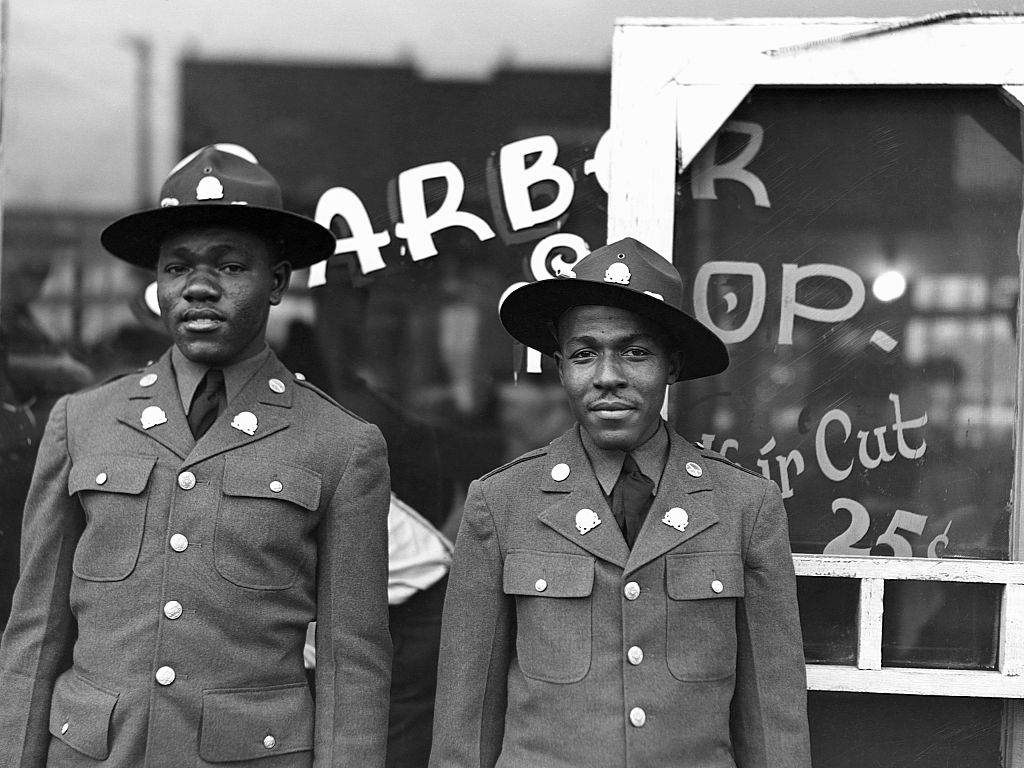Veterans Day: 100 Vintage Photos Of Black Soldiers Fighting Wars For America

Source: Historical / Getty
UPDATED: 8:00 a.m. ET, Nov. 11, 2024
As the country pauses to observe Veterans Day, it’s important to remember that the history of especially Black people in the American military is a complicated one. On its surface, it’s yet another one of the countless ways that Black people have helped build this country and keep it safe. However, beneath that veneer lies some ugly truths that haunt the U.S. military’s legacy to this day.
While much of that has to do with Black soldiers‘ time enlisted in the armed forces, the way that Black veterans have largely been treated has been the subject of much scrutiny since Crispus Attucks became the first American casualty of the Revolutionary War.
During the War of 1812, Black soldiers helped defeat the British in New Orleans. By the end of the Civil War, 10% of the Union forces were Black. The 54th regiment, which was an all-Black fighting unit, was immortalized in the movie “Glory” and fought a number of important battles, eventually losing more than half of its troops. Two of Frederick Douglass’ sons also fought in the Civil War and Harriet Tubman served as a scout for the 2nd South Carolina Volunteers.
During World War I, Black soldiers were given full citizenship, although they still fought in segregated units. Many credit Black soldiers for bringing jazz music to Europe and France.
In World War II, Black soldiers had an increased presence. The NAACP pushed for the War Department to form the all-Black 99th Pursuit Squadron of the U.S. Army Air Corps, otherwise known as the Tuskegee Airmen, the only U.S. unit to ever sink a German destroyer. Like the 54th Regiment, the Tuskegee Airmen were immortalized in a movie of the same name.
The Marines first opened themselves to Black volunteers in 1942. To the dismay of the Marines, only 63 African Americans joined.
Lieutenant Colonel Campbell C. Johnson, a Black officer, decided that he would actively recruit Black Marines. Due to his efforts, African Americans began joining the Marines at a rate of more than 1,000 a month in 1943.
Despite the opposition to the Vietnam War from Black leaders and athletes like Martin Luther King and Muhammad Ali, many Black soldiers both volunteered and were drafted to fight in the conflict in southeastern Asia. Colin Powell joined the ROTC at City College and would go on to be a captain in Vietnam, later becoming a major. Powell would go on to be National Security Adviser (1987–1989), Commander-in-Chief, U.S. Army Forces Command (1989), Chairman of the Joint Chiefs of Staff (1989–1993) and eventually the Secretary of State for President George W. Bush in 2001.
While that particular Black history in the American military is undeniable, so is what the Equal Justice Initiative reminded readers of: How Black soldiers returning home “were more likely to face discrimination, disrespect, violence, and even death.” According to the New Yorker, much of that treatment was blamed on white people who “speculated that, while stationed in Europe, black soldiers had enjoyed wartime liaisons with white French women, increasing their lust—which, in the white imagination, was already dangerously high—for sex with white American women.”
On top of that, research from the Department of Veterans Affairs found that “African-American and Hispanic Veterans said they had more negative experiences in obtaining access to health care than whites.”
With that rich history in mind, scroll down to see dozens of vintage images of Black soldiers fighting foreign wars for the United States Of America.

Post a Comment
0 Comments